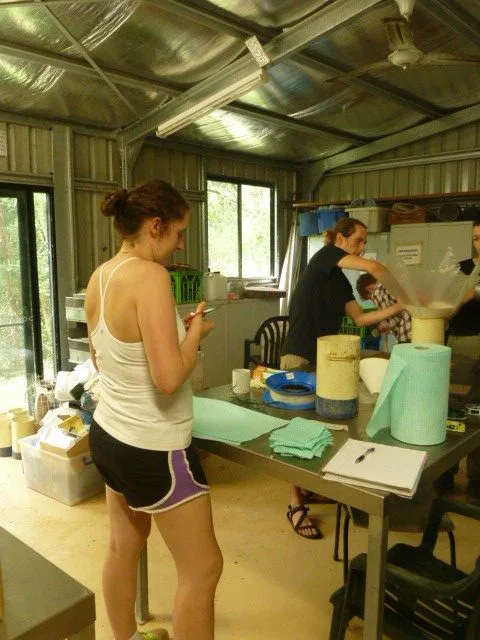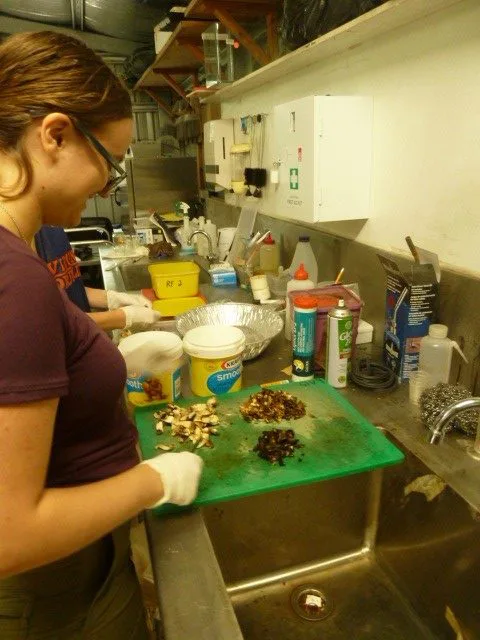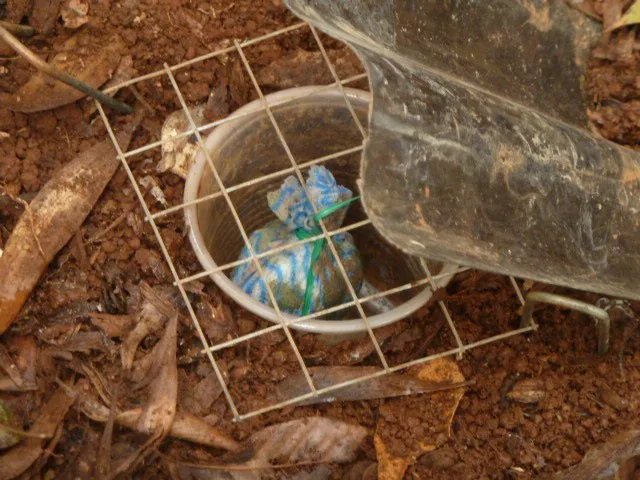Student Research Spotlight: Australia
We are excited to introduce SFS’ first ever Student Research Spotlight! This spotlight shines on a group of passionate students who went down undah to study the role of dung beetles in Australia’s rainforest restoration. Curious what they discovered? Read a synopsis of their research below!
Dung Beetle Assemblages among Differing Rainforest Developmental Types
Amber Bjerre (Cornell University), Maura Davis (University of Virginia), Sydney Lang (University of Southern California)
Under the supervision of Professor Sigrid Heise-Pavlov, Ph.D.
The Environmental Concern: On the Atherton Tablelands in Far North Queensland, Australia, much of the original rainforest had been cleared and fragmented. Rainforest restoration processes are lengthy and complex, and our students were curious about the role of native animal species in the development of restored rainforest.
Dung beetles (subfamily Scarabaeinae of the family Scarabaeidae, order Coleoptera) are bioindicators of tropical ecosystem health and important ecological service providers. Through their manipulation of dung for feeding and larva caretaking, they contribute to important ecological processes such as nutrient cycling, bioturbation, secondary seed dispersal, and parasite reduction. Their presence in restored ecosystems is therefore important to facilitate the establishment of ecological processes that can stabilize these new ecosystems.
Our three students investigated dung beetle species richness and abundances in relation to soil conditions in three sites of restored rainforest (of different ages), one site of naturally regrown rainforest and one site of old growth rainforest.
The Methods: Modified pitfall traps baited with dung and mushrooms were installed in these sites from which also soil samples were collected. Beetles were identified using a dung beetle identification guide for Far North Queensland while soil samples were analysed with respect to pH, nitrogen, soil texture (via a plasticity test), soil consolidation and air spaces, and aggregate size distribution. In addition, earth worm activity was measured in soil while taking the soil samples.

Preparing bait balls

Preparing bait balls

Modified pitfall trap
The Results: Dung beetle species diversity was found to be highest in old growth rainforest and lowest in revegetated sites, while abundance was highest in naturally regrown rainforest and lowest in revegetated rainforest sites. Using a Principal Component Analysis, the effective number of species (combined richness and abundances) is most diverse in sandy soil with low clay content, high aeration, and high earth worm activity while pH and nitrogen content of the soil do not seem to be influential on species diversity and abundance.
The Impact: The study suggests that soil characteristics should be considered when assessing the colonization of sites by dung beetles, whose diversity and abundance indirectly indicate the effectiveness of revegetation in restoring rainforest ecosystems. Although dung beetles colonize revegetated sites unassisted, their number and species diversity are limited by environmental factors such as soil aeration, soil texture, and earth worm activity. It may be possible to inoculate a site with dung beetles to facilitate its development, but this would require further studies into the adaptation of different dung beetle species to different soil types. The identified beetles of this study were examined with respect to their biology and students created a reference collection of these beetles for further studies.
Stay tuned for more Student Research Spotlights!
Related Posts


Alumni Reflections: Stories of the Return to Kenya

